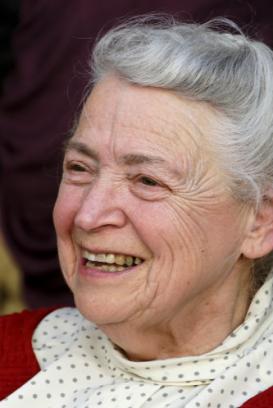Physicist Mildred Dresselhaus to speak at Lehigh
Mildred Dresselhaus, an Institute Professor in the departments of physics and electrical engineering at the Massachusetts Institute of Technology, will give a public lecture at 4:10 p.m. on Wednesday, Sept. 14, in Lewis Lab 270. Her talk, “Great Scientists I Have Worked With and What I Learned from Each,” will highlight her experiences with mentors who have helped her throughout her career.
Dr. Dresselhaus will also present a physics colloquium at 4:10 p.m. on Thursday, Sept. 15, in Lewis Lab 270. Her technical presentation is titled “Research Advances as Size Gets Increasingly Small.”
Known as the “Queen of Carbon,” Dr. Dresselhaus is best known for her work in carbon nanomaterials and graphite, and, more recently, transition metal dichalcogenides and phosphorene. She has spent her life addressing problems in condensed matter and materials physics. In 1960, she began her work at MIT’s Lincoln Laboratory, where she conducted experiments that helped develop a fundamental understanding of the electronic structure of semi-metals. The first tenured woman faculty member in MIT’s School of Engineering, Dr. Dresselhaus played a key role in the resurgence of research in the field of thermoelectrics and has co-authored eight books and nearly 1,700 papers, primarily on carbon science.
Slava V. Rotkin, professor of physics and materials science and engineering, said, “Millie is one of the strongest contemporary physicists who formed the field which we call ‘nanocarbons’ nowadays. It is amazing that she was studying graphite and carbon fibers in early 60s, way before other nanocarbon materials, like nanotubes, graphene, etc., were discovered. It was her intelligence and broad education which helped her to foresee so early the bright future in this cross-disciplinary field, where many Lehigh faculty currently work and train undergraduate and graduate students.”
Dr. Dresselhaus has served as director of the Office of Science at the U.S. Department of Energy, president of the American Physical Society, treasurer of the U.S. National Academy of Sciences and president of the American Association for the Advancement of Science. Among many accolades, she has received the U.S. National Medal of Science, the Nicholson Medal for Humanitarian Service, the Compton Award, the Fermi Award, the Kavli Prize, the Presidential Medal of Freedom and 36 honorary doctoral degrees, including one from Lehigh in 2013.
A longtime advocate of women in science, Dr. Dresselhaus used the $1 million Kavli Prize she received in 2012 to create the Mildred S. Dresselhaus Fund in support of women or junior faculty members at MIT.
In 2015, Dr. Dresselhaus received the IEEE Medal of Honor for her many contributions to science and engineering. She was the first woman to receive the award in the nearly 100 years of the organization’s existence.
“With innovations that have helped mold the history of advancements in science, technology, and education in the United States and around the world, Mildred Dresselhaus has paved the way for the rise of nanotechnology and blazed a path for women in science and engineering,” reads her profile on the IEEE Medal of Honor webpage.
Posted on:





